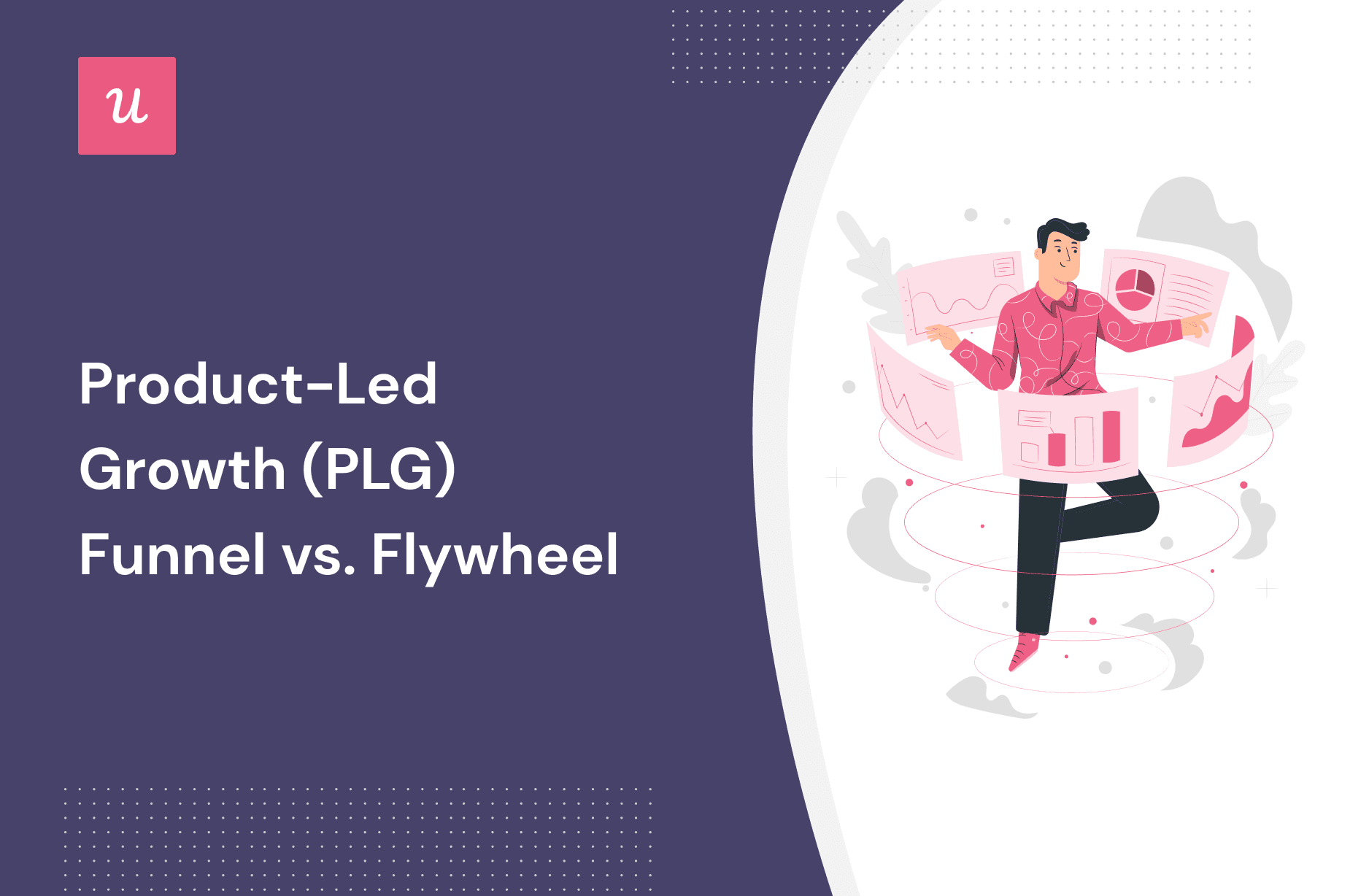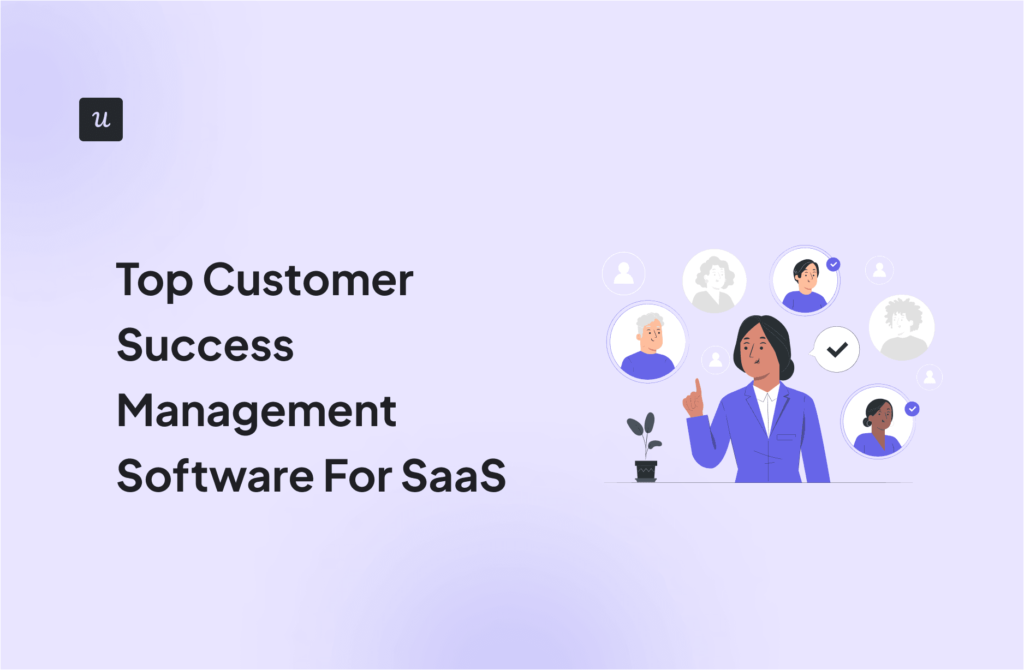
Let’s start with one question: why do you need a PLG funnel?
The simple answer is that it combines product management, customer acquisition, and customer success into a unified product-led growth collective that your sales teams and the entire company can get behind.
In this guide, we’re going to explain what a PLG funnel is, which types you should use, and how product-led companies can leverage it to achieve sustainable growth!
Try Userpilot Now
See Why 1,000+ Teams Choose Userpilot

What is a product-led growth (PLG) funnel?
A product-led growth funnel is a framework for visualizing the process by which your product converts prospects into customers.
Most PLG funnels begin with a broad target audience and then gradually get narrower across each touchpoint, such as website pages, marketing materials, and free trials or freemium plans.
What is a product-led growth (PLG) flywheel?
A product-led growth flywheel is a framework to drive SaaS growth through improvements in the user experience.
The goal of product-led growth flywheel is to improve the customer experience by enhancing the product itself instead of investing heavily in sales or marketing.
Main differences between a PLG funnel and a flywheel

While a product-led growth flywheel and funnel both leverage product usage, there are a few key differences between the two product-led growth strategy frameworks:
- PLG funnels are almost structurally identical to conventional funnels, except the product experience takes the place of sales and marketing teams.
- Product-led growth flywheels aim to reduce your customer acquisition cost by creating a growth cycle where new users turn into brand advocates that attract new users.
- PLG funnels are structured with a series of stages, while PLG flywheels are structured as two looping segments (one for user archetypes and another for user actions).
- Product-led growth funnels are easier to build, while PLG flywheels are easier to maintain (once they get going).
- PLG funnels still require traditional lead generation, while PLG flywheels leverage users as an acquisition channel.
Types of leads in the product-led growth model
There are three distinct types of leads that you’ll encounter with a product-led growth model:
- Marketing qualified leads (MQLs). A marketing-qualified lead is a lead that’s more likely to become a customer due to existing interactions or shows of interest on marketing channels. These could include visiting landing pages, clicking on CTAs, engaging with social posts, and more.
- Sales qualified leads (SQLs). An SQL is a prospect that has been vetted by your marketing and/or sales teams and then marked as ready to proceed to the next stage of a sales pipeline. Generally, SQLs are more likely to become paying customers than MQLs due to the higher standard of vetting.
- Product qualified leads (PQLs). PQLs are users or companies that have already received value from using your product through a free trial, freemium account, or any other hands-on experience with it. PQLs are highly likely to convert during the sales process and drive customer acquisition in the future.
Types of PLG funnels to use in your product-led growth strategy
Like any traditional sales funnel, there are multiple types of PLG funnels that you can use to convert a product-qualified lead or acquire more free users for your freemium product.
There are four main types of PLG funnels for you to choose from:
- Self-serve funnels.
- Sales-assisted funnels.
- Bottom-up funnels.
- Top-down funnels.

Self-serve funnel
Self-serve funnels are best suited to products that have small and medium-sized businesses (SMBs) as their end user since your sales team won’t play any role in this type of funnel.
The goal of self-serve funnels is to drive autonomous revenue growth without increasing customer acquisition costs.
Sales-assisted funnel
Sales-assisted funnels have your sales team playing a supporting, transactional role.
Think of this as a hybrid self-serve funnel since users still go through most of the funnel on their own but have your sales team swoop in at the end to help close the deal or address any remaining objections.
Note: Many companies start with a self-serve funnel and then incorporate sales assistance to expand the amount of revenue growth generated from the funnel. If you take the same approach, remember that sales representatives are only there to reduce friction in sales assisted funnel and should stick to low-touch interactions.
Bottom-up funnel
Bottom-up funnels use a land-and-expand approach to increase engagement on existing accounts and drive expansion revenue as a result.
These types of funnels are usually targeted toward mid-market prospects or enterprise leads that require hands-on sales representatives to seal the deal.
Top-down funnel
Top-down funnels are usually built from a combination of outbound sales and account-based management.
Due to the high operating costs of offering VIP treatment to product users, top-down strategies are usually reserved for closing large deals with multiple stakeholders and are most common with enterprise solutions.
Should you use a product-led growth funnel or a flywheel: Which is the best approach?
If funnels are easier to build and track but flywheels are more self-sustaining, which one should you pursue?
Well, the optimal approach is to use both frameworks and have them complement one another.
That said, there are a few pros and cons to each approach that you should be aware of first:
Pros of a PLG funnel
PLG funnels have a few clear benefits such as:
- Linear structure. PLG funnels have a distinct start, middle, and finish line, making them easy to track.
- Multiple types. The ideal funnel type will depend on who your target customer is, how much revenue you’re generating, what marketing strategies you’re using, and your overall business strategy — but at least you have options.
- Scalable costs. The barrier to entry for PLG funnels is quite low since building a basic self-serve funnel won’t take too much time or resources. As your company grows, you can scale up to a sales-assisted or even top-down funnel to keep up with the evolving needs of your most active users.
Cons of a PLG funnel
Of course, there are a few drawbacks to using PLG funnels:
- Constrictive design. Linear funnels don’t always reflect user behavior and could make your customer base feel like you’re trying to force them into steps they aren’t ready for. However, speaking to leads in the evaluation stage could offer insights that help you complete the core parts of your funnel.
- After-sale blind spot. Because PLG funnels have a definitive end, they don’t account for any activation, engagement, or growth that should occur after the initial sale. This stands in stark contrast to PLG flywheels that leverage users who use the product regularly as acquisition engines.
- Cross-functional hinderance. Funnels can draw lines in the sand that keep your product, marketing, and sales team from collaborating freely — mainly because they won’t really have much overlap during the user acquisition and product adoption journey.
Pros of a flywheel
There are quite a few benefits for PLG companies to reap by adopting a flywheel framework:
- Cyclical growth. PLG flywheels start with prospects learning about a product, becoming new users who try it out, turning into regulars who adopt it fully, and eventually reaching advocate status to repeat the loop by helping prospects learn about the product.
- Data-driven. Flywheel frameworks incentivize a data-driven approach to acquisition and development since learning more about how the average user interacts with your product throughout their user journey will directly affect how much revenue the PLG framework contributes.
- Customer insights. Because your power users and brand advocates play a key role in the PLG flywheel, you’re more likely to pick up on valuable insights (that you likely would have missed if you were using a standard sales funnel).
Cons of a flywheel
PLG companies should also be aware of the potential downsides to using the flywheel approach:
- Performance monitoring. Tracking the impact that a flywheel has on growth metrics can be difficult due to its dynamic, cyclical, and sometimes unclear structure. Having your product teams and data analysts own the KPIs for PLG flywheels could help but may not alleviate the issue entirely.
- Vague channels. Unlike funnels, PLG flywheels don’t really have dedicated channels or touchpoints for customers to interact with your sales or marketing team. This could make it harder to create an omnichannel customer experience.
- Executive inertia. Because flywheels are much harder to explain — compared to a simpler potential solution like funnels — you could end up with executives who don’t support the initiative, grasp the full framework, or notice the impact that it has on a product-led company.
How to use a flywheel and a PLG funnel together to drive product growth
If your company is targeting multiple market segments (e.g. SMBs and enterprise clients), then you may not be able to get by on a single framework.
To make sure you meet the goals of each user persona and customer type, try combining flywheels with funnels to get the best of both worlds.
You can start things off with a PLG funnel if your sales team needs to play a role in closing certain accounts or engaging with particular channels.
However, once a lead signs up for a free trial or makes their first purchase then the PLG flywheel should take over to maximize product usage and word-of-mouth.
It’ll likely take some fine-tuning to ensure this hybrid approach is appropriate for your market segment.
Last but not least, you’ll also need to find a digital adoption platform that helps you monitor product usage data.
Userpilot helps you track behavioral analytics for multiple user segments, monitor each stage of the user journey through funnel reports, and integrate other tools in your PLG tech stack.

Conclusion
As you can see, there are countless benefits to using a product-led growth flywheel and/or funnel to grow a SaaS company.
Whether it’s reducing acquisition costs, increasing the ROI on leads from content marketing, or leveraging your user base to drive viral growth, the sky is truly the limit.
If you’re ready to leverage the exponential growth that countless SaaS companies have already experienced, then it’s time to get your free Userpilot demo today!






